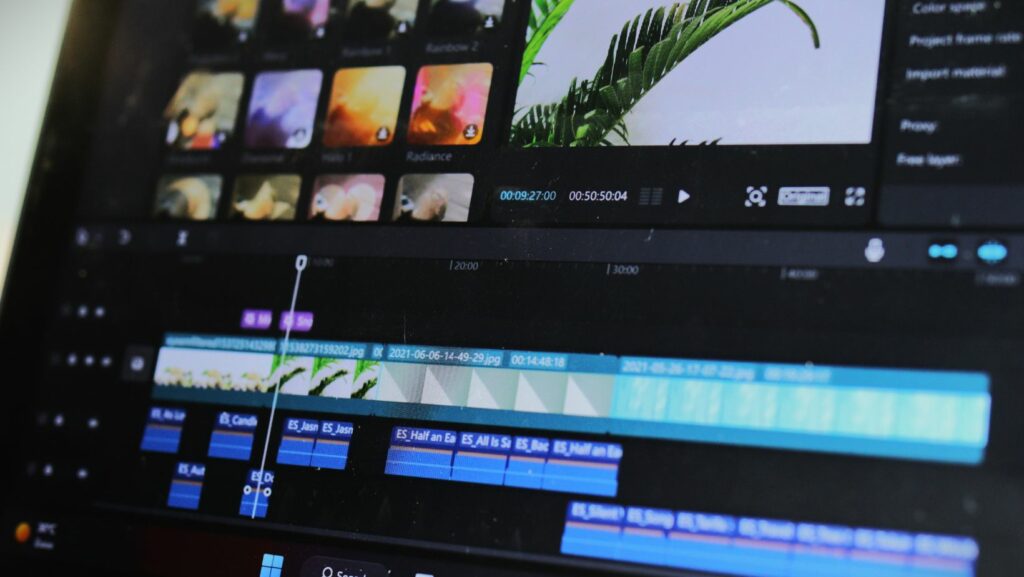In the ever-evolving landscape of the video industry, staying abreast of the latest trends isn’t just beneficial—it’s crucial. From the rise of virtual reality to the dominance of streaming platforms, the industry is in a state of constant flux. This article aims to shed light on the most significant video industry trends influencing today’s media landscape.
Whether you’re a seasoned professional or a curious newcomer, understanding these trends can provide a competitive edge. It’s not just about predicting the next big thing; it’s about understanding the forces shaping the industry. So, let’s dive into the dynamic world of video industry trends and discover what the future might hold.
Video Industry Trends
 The video industry’s transformation reflects an inventive spectrum of advances. This section delves into how the industry morphed from analog to digital and the subsequent rise of streaming platforms.
The video industry’s transformation reflects an inventive spectrum of advances. This section delves into how the industry morphed from analog to digital and the subsequent rise of streaming platforms.
The video industry’s initial groundwork lies in analog technology. Analog video, marked by the use of Videotape Recorders (VTRs), had its prime in the late 20th century. Around the 1980s, a revolutionary shift occurred as the introduction of Digital Video Discs (DVDs) and Compact Discs (CDs) began. These digital platforms offered viewers a superior video and audio quality compared to analog, sparking their widespread adoption. Moreover, it provided benefits such as higher longevity and the ability to reproduce content without loss in quality.
Streaming platforms account for a major chunk in redefining the video industry of the 21st century. Platforms like Netflix and Amazon Prime Video began gaining recognition around the 2010s. The exponential growth of these platforms was fueled by the rise in high-speed internet and the convenience it brought to viewers.
Current Video Industry Trends
 After a comprehensive journey from videotapes to streaming platforms, the video industry continues to evolve at a swift pace. The modern trends of ultra-high-definition visuals, and immersive virtual and augmented realities, shine as testament to this evolution.
After a comprehensive journey from videotapes to streaming platforms, the video industry continues to evolve at a swift pace. The modern trends of ultra-high-definition visuals, and immersive virtual and augmented realities, shine as testament to this evolution.
Ultra-high-definition visual content like 4K and 8K has become popular, dramatically changing video consumption patterns. 4K resolution, or 3840 x 2160 pixels, offers four times the clarity of 1080p high-definition videos. A leap again, 8K resolution carries 7680 x 4320 pixels, rendering an unparalleled viewing experience. Companies like Sony and Samsung seize the chance and invest in creating 8K-capable televisions and cameras, showcasing precise details and realistic colors in their output. Despite the current limited 8K content availability, the Japanese Broadcasting Corporation, NHK, optimistically initiated 8K broadcasts in 2018, expecting more production houses to entertain the 8K trend in the coming years.
Virtual Reality and Augmented Reality
Virtual Reality (VR) and Augmented Reality (AR) technologies have also made their mark in the video industry. VR fully immerses viewers into a computer-generated world, while AR blends virtual elements into the real world. Companies like Oculus, Samsung, and HTC have designed VR headsets, allowing users to enjoy immersive video games, movies, and educational content.
Influence of Social Media on Video Consumption
 In the vast digital landscape, social media heavily fuels modern video consumption trends. This platform-centric consumption shapes the video industry, leading to new forms of content and distinct trends on each platform.
In the vast digital landscape, social media heavily fuels modern video consumption trends. This platform-centric consumption shapes the video industry, leading to new forms of content and distinct trends on each platform.
User-generated content (UGC), notably from platforms like Instagram, TikTok, and YouTube, takes a significant share in the industry. It represents a broad spectrum of formats, ranging from bite-sized videos (examples: Vine’s six-second clips, TikTok’s 15-second performances) to long-drawn streams (for instance, Twitch’s gaming broadcasts). Being a dynamic content source, UGC attracts millions of views daily and has caused a paradigm shift in consumption habits. It’s also worth noting the rise of ‘stories,’ ephemeral video content first introduced by Snapchat and later adopted by Instagram and Facebook and its impact on user engagement.
Platform-Specific Trends
Each social media platform presents unique trends that influence how content creators produce and distribute videos. On YouTube, for instance, viewers favor long-form educational content like tutorials or documentaries. Instagram’s audience, however, shows preference for short, visually-appealing clips, often accompanied by a catchy soundtrack, promoting likes and shares. Meanwhile, TikTok’s rapid-fire content rhythm encourages creators to deliver entertaining nuggets within tight time constraints, often focusing on dance trends or comedic skits. Hence, platform-specific trends contribute considerably to the evolving landscape of the video industry.



